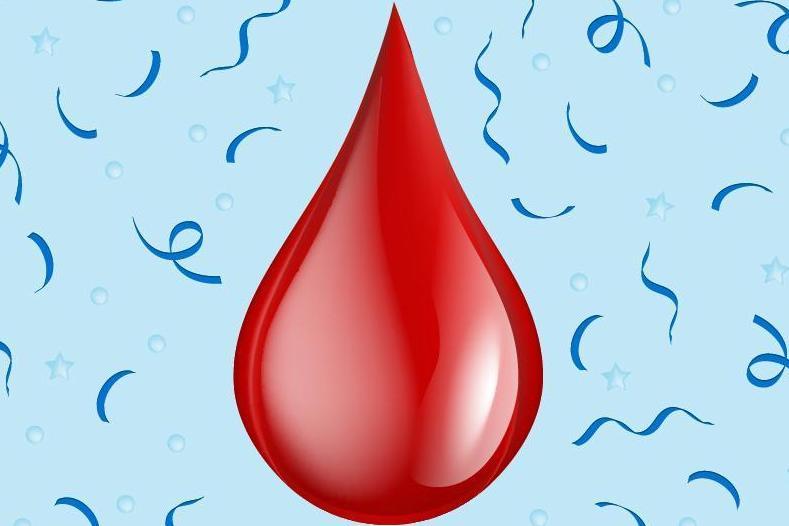The new ‘period’ emoji is a reminder that destigmatising menstruation has a long way to go
It’s been a long time coming, but it is a step in the right direction, especially for the 50 per cent of young women who believe it will encourage them to talk more openly about menstruation


Your support helps us to tell the story
From reproductive rights to climate change to Big Tech, The Independent is on the ground when the story is developing. Whether it's investigating the financials of Elon Musk's pro-Trump PAC or producing our latest documentary, 'The A Word', which shines a light on the American women fighting for reproductive rights, we know how important it is to parse out the facts from the messaging.
At such a critical moment in US history, we need reporters on the ground. Your donation allows us to keep sending journalists to speak to both sides of the story.
The Independent is trusted by Americans across the entire political spectrum. And unlike many other quality news outlets, we choose not to lock Americans out of our reporting and analysis with paywalls. We believe quality journalism should be available to everyone, paid for by those who can afford it.
Your support makes all the difference.And lo! On the seventh day, the Lord (well, in this instance, the Unicode Consortium) decided there should be a period emoji. A “menstruation” emoji, to be precise: a perfectly rounded, red droplet, designed to tackle stigma and encourage conversation around periods.
Naturally, in a world where a significant percentage of us struggle to communicate unless in emoji form, it might be a surprise that there isn’t already an emoji to represent – whisper it – periods.
After all, there are vampire, mermaid and zombie emojis; unlike these, periods are actually real, so definitely have the relevancy edge. There are two ant emojis, a dozen moon emojis (literally), a rather pointless boiled egg emoji, a ball of knitting wool AND a bobbin. According to Emojipedia, there are close to 3,000 emojis in circulation – yet not a single one that denotes periods.
The decision to introduce the symbol follows extensive work from Plan International UK, which first submitted a bid for a “period pants” emoji after a 2017 survey found half of women in the 18-34 age bracket believed an emoji would help them talk about periods. The pants were turned down, despite receiving the backing of over 55,000 voters; Plan International UK then paired with NHS Blood and Transplant and submitted a successful proposal for the droplet design.
Sure, it’s not as cheeky as the other “everyone does it” emoji – clue: the one that has eyes, a grin and according to some, is actually chocolate ice-cream. But it’s a start, right? (Though arguably a tampon emoji with bulging eyes and a manic beam could double as an ice lolly – just saying.)
The fact that a period emoji has been introduced to the expansive emoji library highlights the fact that it’s a conversation we’re increasingly having, and there’s still so much to say.
In our age of ultra wokeness, menstruation still has a hint of taboo around it, whether in active conversation with others, or in terms of people feeling confident enough to talk about it, or share experiences.
Periods link people together – over race, religion, sexuality, reality-show preference, career ambitions, bank balance... You get the drift. Despite this unifying power, it’s still a deeply intimate monthly process between a woman and her body – so much so, that society traditionally tells us it’s not cool to talk about; rather, it’s something to be “got on with”, endured, tolerated.
Don’t get me wrong. The people who have wanted to talk about periods on WhatsApp or Snapchat or iMessage all this time will have found a way, obviously; they’ll have sent a shark Gif on their group chat, for example, or alternated the knife emoji with the “significant red circle” in their tweets. They might have even had face-to-face conversations. Equally, the introduction of the new emoji won’t appeal or be of interest to everyone: we don’t all want to talk about periods. But just the fact it’s there shows it’s a step in the right direction, especially for the 50 per cent of young women who believe it will encourage them to talk more openly.
Could the emoji have been a little more obvious? Subtle is better than nothing, sure, and with the original period pants idea turned down, chances are a tampon or sanitary towel (surely not a million miles from that weird pile of notes with wings) would be rejected too. The beauty of the red droplet is it can mean everything and nothing; it drips with meaning but equally, doesn’t have to.
Plus, these things tend to grow of their own accord. Did the developers intend for the aubergine to take on such nudge-nudge wink-wink intention, for example, or for the side-eye emoji to innocently convey so much in just one glance?
One thing the new emoji could definitely do is widen discussion and awareness around the complexities and problems some women endure because of their period.
According to stats, one in 10 UK women suffer with agonising endometriosis; a similar proportion have polycystic ovary syndrome.
Period poverty will affect an estimated one in 10 young women this year; organisations such as The Red Box Project works tirelessly to tackle this, spreading awareness among schools and communities and ultimately aiming to help the 137,000 schoolgirls who miss education each year because they can’t afford sanitary products. Its recently-launched campaign with Free Periods campaign founder, Amika George, is asking the government to consider making products free for schoolgirls.
And what about the 68,000 homeless women across the country who might struggle to finance or source sanitary products each month? I could go on and on (and on), because too often, these issues would fall by the wayside if we didn’t talk about them. They’re reliant on awareness and discussion to keep them at the forefront of our minds.
I’ll end with a stat: the typical woman will have 450 periods in her lifetime. That’s at least 449 times more than she will ever meet a vampire – so long may the conversation around them (periods, not vampires) get louder. Fundamentally, it’s sad this emoji needs to exist – but equally, it’s mad that it didn’t already.
Join our commenting forum
Join thought-provoking conversations, follow other Independent readers and see their replies
Comments